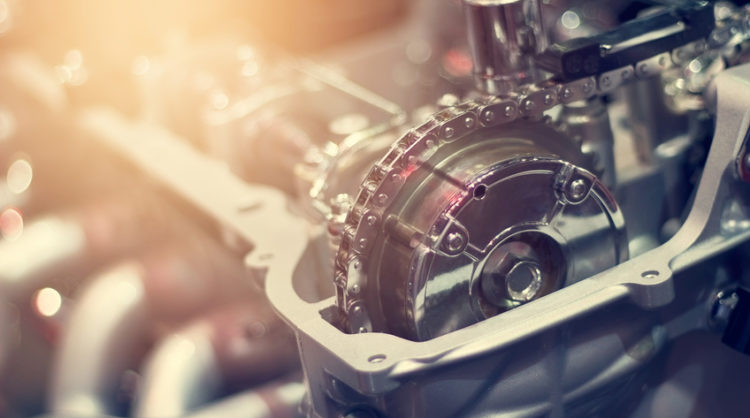Important Factors To Consider for Guaranteeing Top Quality and Long Life in operation Engines
When taking into consideration the purchase of a made use of engine, ensuring its quality and longevity requires a multifaceted strategy. Maintenance background is a pivotal element, as it provides insight into the engine's past care and prospective future integrity. Past documents, a thorough inspection of physical parts-- such as belts, tubes, and seals-- can reveal covert issues. Performance testing is additionally vital, supplying a photo of the engine's operational efficiency. Comprehending the nuances of these evaluations and their ramifications can be complicated. What are the vital techniques that can be employed to navigate this complex evaluation process properly?
Engine History Evaluation
In the world of utilized engines, a complete engine background assessment is extremely important to making certain high quality and reliability. Recognizing an engine's past can offer critical understandings into its performance abilities and possible future longevity. A careful history evaluation incorporates several crucial aspects that play a considerable role in analyzing an engine's problem. To start with, maintenance documents are indispensable. Routine upkeep, including oil modifications, filter substitutes, and set up tune-ups, indicate that the engine has actually been well-cared-for, decreasing the probability of unforeseen failings.
Engines that have actually undergone significant fixings may have underlying issues that can resurface. Analyzing the engine's mileage can offer as a sign of wear and tear. An engine utilized mainly for long-distance freeway driving might be in far better condition than one subjected to constant stop-and-go city traffic.
Basically, an extensive investigation right into an engine's history is necessary for making educated getting decisions. used engines for sale.
Comprehensive Examination Guide
While understanding an engine's history supplies useful context, a detailed inspection is the next step to ensure its present problem lines up with historic information. The assessment must start with a visual assessment, inspecting for indicators of leaks, deterioration, and uncommon wear. Evaluate the exterior for oil spots or coolant marks, which might show underlying problems.
Following, evaluate the engine's mounting system for any type of loosened bolts or problems that could affect efficiency. Pay attention to the condition of belts and pipes, as these components are critical for optimal engine performance. Examine for cracks, fraying, or any kind of signs of degeneration.

Determining Deterioration
Acknowledging signs of wear and tear is essential for assessing a used engine's long life and dependability. It involves a careful examination of numerous engine elements to determine their present state and potential future performance.
An additional vital facet is examining the engine's seals and gaskets. In addition, unusual noises during engine procedure, such as knocking or ticking audios, may suggest inner damages or too much wear on relocating parts like pistons or bearings.
The condition of belts and hose pipes is just as essential, as they play a crucial duty in the engine's overall feature. Fractured or torn belts and weak tubes are signs old that can cause engine failing if ignored. Finally, checking out the oil problem and filter can supply understandings into previous maintenance practices, as dirty oil or stopped up filters recommend forget and increased wear.
Performance Screening Basics
Examining the wear and tear of engine elements establishes the stage for a comprehensive analysis through efficiency testing. Efficiency testing offers as an important step in determining the functional stability of a made use of engine.
Using dynamometers is an usual method in efficiency testing. These tools determine the engine's result across different problems, supplying a thorough check account of its functionality. Additionally, on-road testing complements dynamometer analyses by observing engine behavior under typical driving circumstances, ensuring it meets the needed criteria for both safety and effectiveness.
Advanced analysis tools further improve the ability to pinpoint underlying issues. These devices assess engine administration systems, determining faults in electronic elements that can influence efficiency. Comprehensive testing their website not just validates the engine's functional status but likewise help in forecasting future maintenance needs. This ensures the used engine can deliver reputable performance over a prolonged period, thus maximizing its value and life span.
Maintenance and Care Tips
Proper upkeep and treatment are important to extending the life-span of a made use of engine and guaranteeing its constant performance. Regular oil changes are extremely important; making use of the manufacturer's suggested oil kind and grade can stop extreme damage. In addition, oil filters ought to be replaced simultaneously to keep optimum lubrication and tidiness within the engine.
Keeping an eye on fluid levels, consisting of coolant, transmission fluid, and brake fluid, is important. Guaranteeing these liquids go to suitable degrees aids avoid getting too hot and other mechanical problems. Examining belts and hoses for indications of wear, such as splits or fraying, can avert potential failings that may bring about pricey fixings.
Routine inspection of the air filter is additionally essential, as a clean filter makes certain effective airflow and burning, thus optimizing engine efficiency. Ignition system need to be checked and changed when needed to keep effective gas combustion and protect against engine misfires.
Lastly, regular diagnostic checks making use of professional tools can determine possible problems prior to they come to be significant issues. By sticking to these upkeep and treatment tips, utilized engine proprietors can guarantee their engines continue to be reliable, efficient, and efficient in performing more than an extended period.
Final Thought
